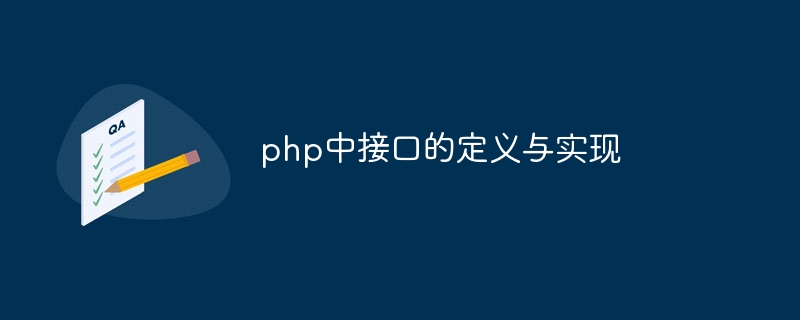Home >Backend Development >PHP Problem >Definition and implementation of interfaces in php
Definition and implementation of interfaces in php
- 尊渡假赌尊渡假赌尊渡假赌Original
- 2023-08-07 11:59:011240browse
Interfaces can be defined and implemented in PHP through interfaces. The operation method is: 1. Create a PHP sample file; 2. Define an interface through "interface"; 3. Implement the interface through the keyword "class" class, and implement the "myMethod()" method in it; 4. Instantiate the object obj of the "MyClass" class, and call the implementation method.

Operating system for this tutorial: Windows 10 system, php8.1.3 version, Dell G3 computer.
In PHP, interfaces can be defined and implemented through interfaces. An interface defines the methods that a class should implement, but does not provide specific implementations of these methods. When a class implements an interface, it must implement all methods declared in the interface.
The following is an example showing how to define and implement an interface:
// 定义一个接口
interface MyInterface {
public function myMethod();
}
// 实现接口的类
class MyClass implements MyInterface {
public function myMethod() {
// 实现接口中的方法
echo "This is myMethod().";
}
}
// 创建实现了接口的对象
$obj = new MyClass();
// 调用实现的方法
$obj->myMethod(); // 输出:This is myMethod().In the above example, we first define an interface named MyInterface and declare a myMethod() method. Then, we created a class MyClass that implements the MyInterface interface and implemented the myMethod() method in it.
Finally, we instantiated the object obj of the MyClass class and called the implemented method $obj->myMethod().
It should be noted that if a class implements an interface, then it must implement all methods declared in the interface. Otherwise, an error will be thrown during instantiation of the class.
The use of interfaces can help modularize the code and provide support for polymorphism, making the code more flexible and extensible.
The above is the detailed content of Definition and implementation of interfaces in php. For more information, please follow other related articles on the PHP Chinese website!

